Monstera plants have taken the world by storm, adorning Instagram feeds, Pinterest boards, and windowsills across the globe. Their unique, eye-catching leaves and relatively easy care make them a popular choice among plant enthusiasts.
If you’re considering adding a Monstera to your collection, you’re in luck! This guide will dive deep into various Monstera varieties to help you make an informed decision.
Table of Contents
1. Swiss Cheese Plant (Monstera Deliciosa)

Monstera Deliciosa is arguably the most famous of all Monstera varieties. Native to the tropical forests of Central America, this variety is known for its large, glossy, green leaves with distinctive splits and holes. As the plant matures, the leaves get larger, and the fenestrations become more intricate, providing a dramatic focal point in any room.
- Ease of Care: Easy; water when the soil is dry up to 2 inches deep.
- Leaf Pattern: Fenestrated, with large natural holes.
- Mature Size: Can grow up to 8-10 feet indoors.
- Rarity: Common
2. Albo (Monstera Deliciosa ‘Albo-Variegata’)
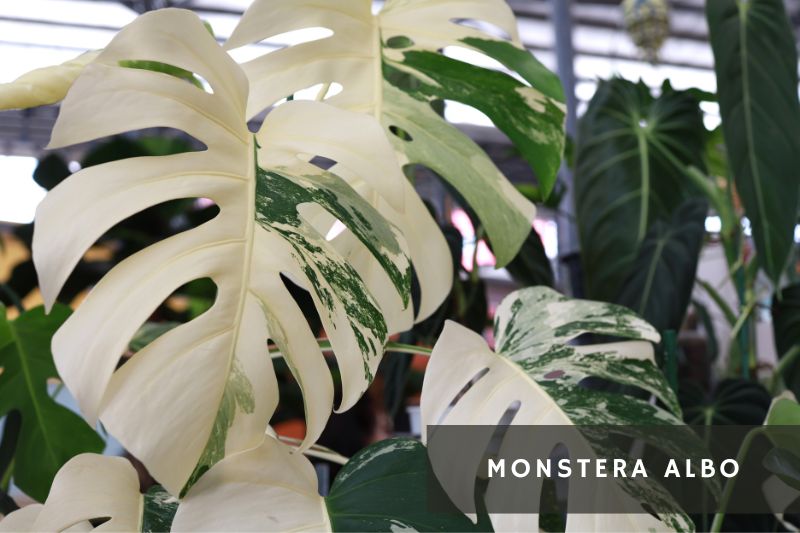
The Monstera Albo offers a twist on the classic Deliciosa with its creamy white variegation. The white portions can vary from leaf to leaf, making each one unique.
Keep in mind that variegated plants are more sensitive to light, as the white parts of the leaves lack chlorophyll. Check out our article about variegation and reverse variegation in plants for more info!
- Ease of Care: Moderate; similar to Deliciosa but more sensitive to light.
- Leaf Pattern: Fenestrated with white variegation.
- Mature Size: 8-10 feet
- Rarity: Rare; usually more expensive than other types.
3. Silver Monstera (Monstera Siltepecana)
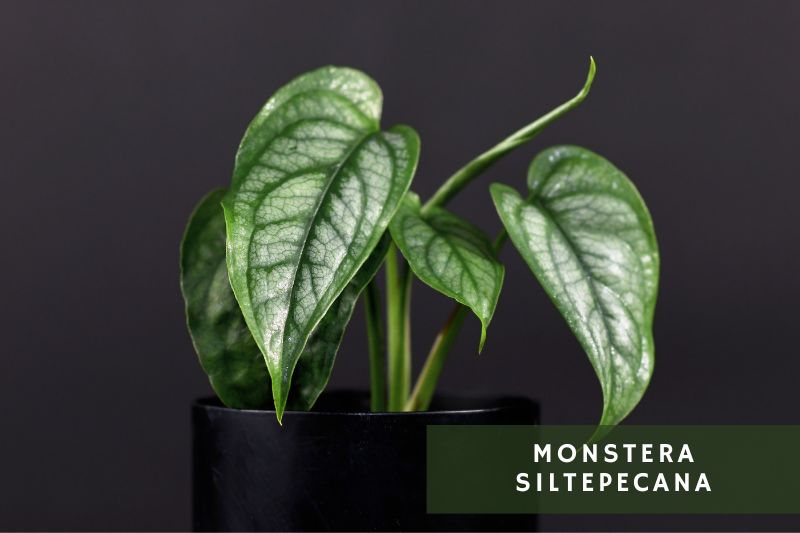
This variety is cherished for its smaller, silvery-green leaves. Unlike many Monsteras that vine as they grow, the Monstera Siltepecana prefers to sprawl, making it a good option for hanging baskets.
- Ease of Care: Moderate
- Leaf Pattern: Smaller, non-fenestrated, silvery-green.
- Mature Size: 3-4 feet
- Rarity: Uncommon
4. Peruvian Monstera (Monstera Karstenianum)

Also known as Monstera ‘Sp. Peru,’ this variety has dark, textured, elongated leaves. The texture has a leather-like quality, giving the plant a more rugged appearance than other Monsteras.
- Ease of Care: Moderate
- Leaf Pattern: Dark, textured, non-fenestrated.
- Mature Size: 2-3 feet
- Rarity: Uncommon
5. Swiss Cheese Vine (Monstera Adansonii)
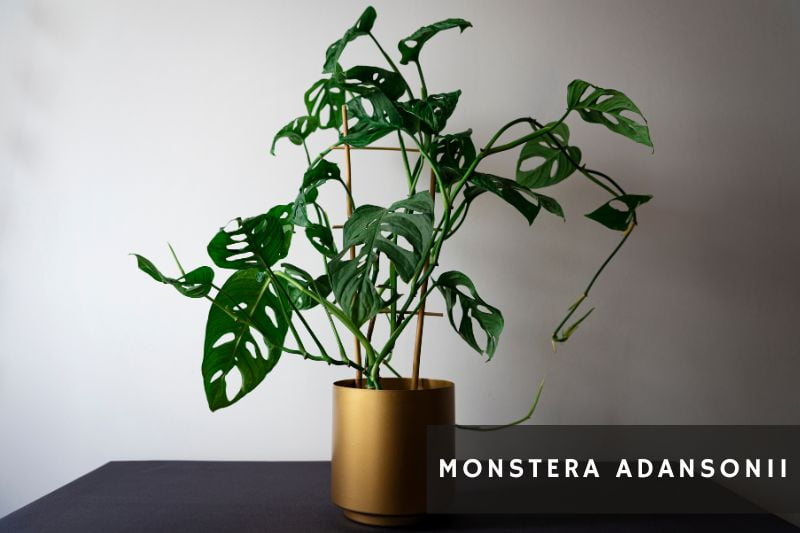
This is the “little sibling” to Monstera Deliciosa, sharing the Swiss Cheese name but in vine form. The leaves are smaller but feature intricate fenestrations. As the plant grows, it will begin to vine and can be trained on a trellis or allowed to hang.
- Ease of Care: Easy
- Leaf Pattern: Smaller and more intricately fenestrated.
- Mature Size: 4-5 feet
- Rarity: Common
6. Variegated Swiss Cheese Vine (Variegated Monstera Adansonii)
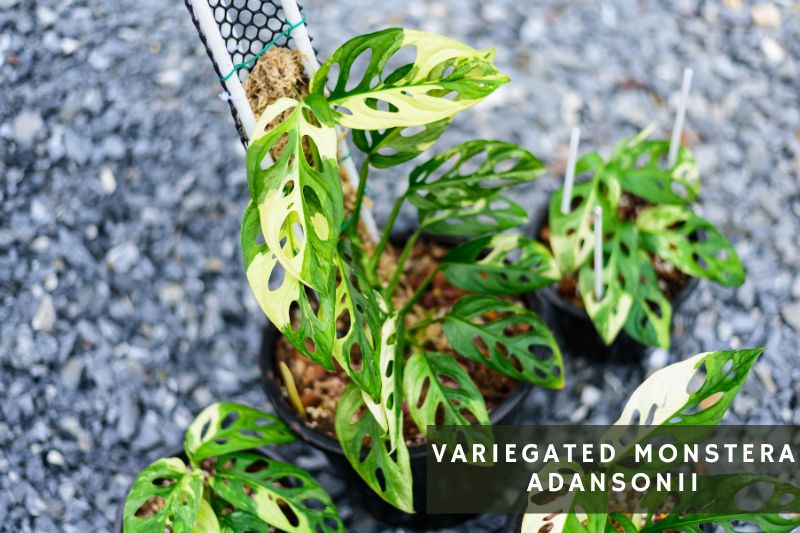
The variegated form of Monstera Adansonii is a spectacle to behold with its intricate leaf holes and patches of creamy white variegation. This variety is a showstopper, but it’s also a bit more delicate than its fully green counterpart.
- Ease of Care: Moderate; extra attention to lighting.
- Leaf Pattern: Intricately fenestrated with white variegation.
- Mature Size: 4-5 feet
- Rarity: Rare
7. Monstera Epipremnoides
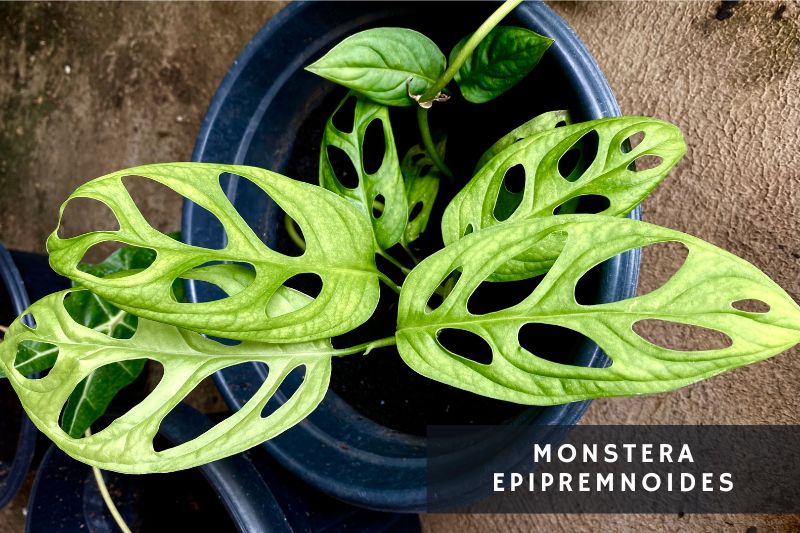
Monstera Epipremnoides is often confused with Monstera Adansonii due to their similar leaf structures. However, Epipremnoides generally boasts larger, more elongated leaves and intricate fenestrations, making it a highly prized variety among collectors. Native to the rainforests of Central and South America, this species prefers higher levels of humidity and indirect light to truly thrive.
- Ease of Care: Moderate; requires higher humidity and careful watering.
- Leaf Pattern: Large, elongated leaves with intricate fenestrations.
- Mature Size: 6-8 feet
- Rarity: Rare
8. Mini Monstera (Rhaphidophora tetrasperma)
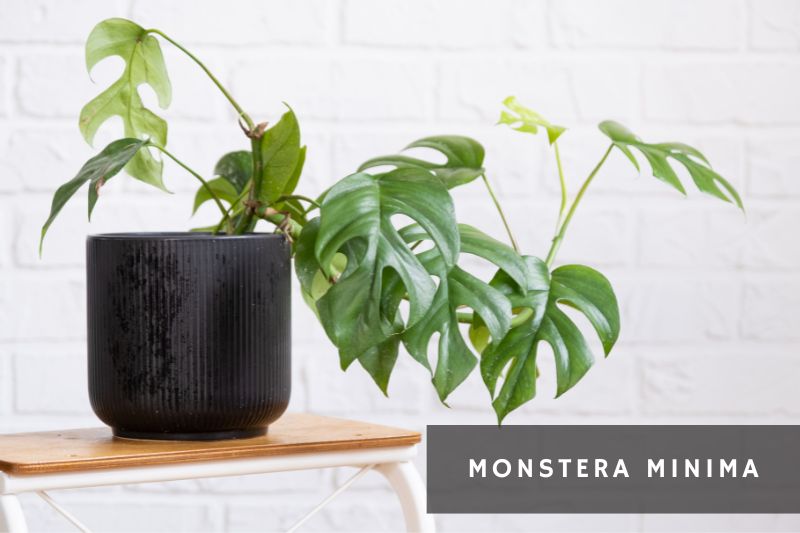
Despite its name, Monstera Minima isn’t technically a Monstera but rather a close relative. It has similar split leaves and vining habits but stays relatively small, making it great for smaller spaces or hanging baskets.
- Ease of Care: Easy
- Leaf Pattern: Smaller, less intricate fenestrations.
- Mature Size: 2-3 feet
- Rarity: Common
9. Monstera Pinnatipartita
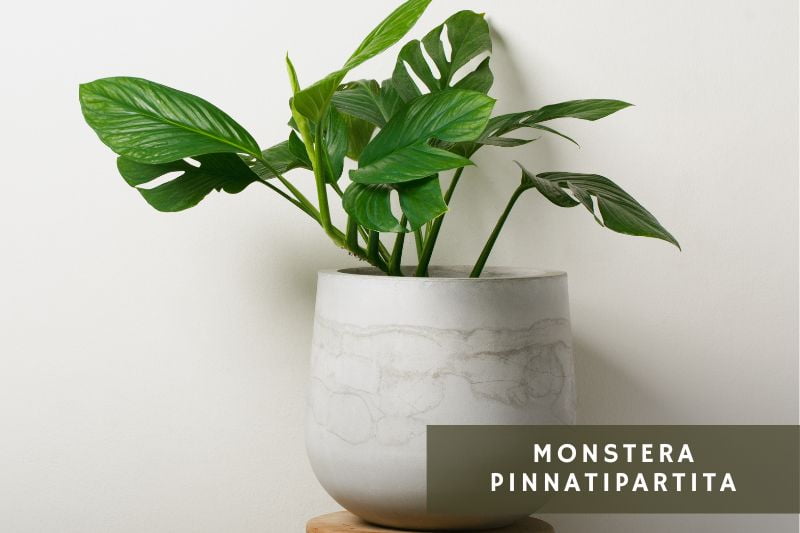
This Monstera variety offers deeply segmented leaves that get more detailed as the plant matures. Native to South American rainforests, it enjoys high humidity and indirect light.
- Ease of Care: Moderate
- Leaf Pattern: Deeply segmented, fenestrated leaves.
- Mature Size: 5-7 feet
- Rarity: Uncommon
10. Cobra Plant (Monstera Standleyana)
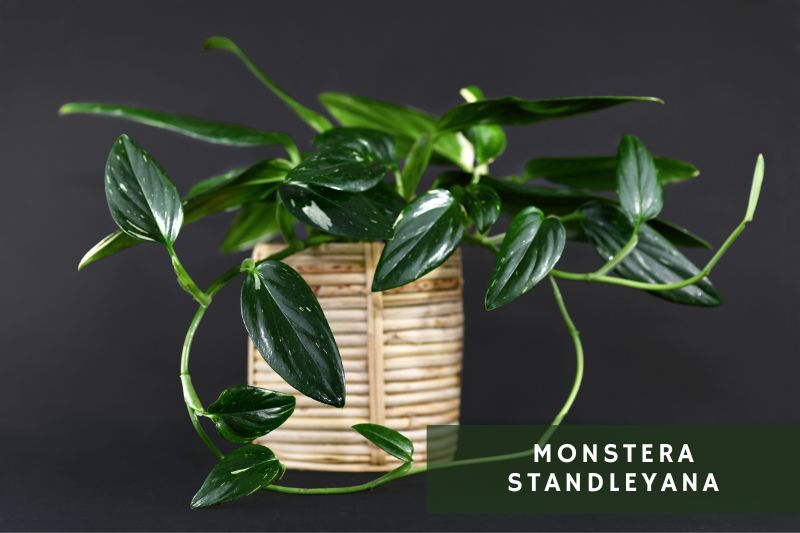
Monstera Standleyana is known for its uniquely patterned leaves, which resemble the spots on a cobra snake. It’s a robust climber and can be trained to grow upwards or allowed to trail in a hanging basket.
- Ease of Care: Moderate; prefers indirect light.
- Leaf Pattern: Spotted or striped, non-fenestrated.
- Mature Size: 4-6 feet
- Rarity: Uncommon
11. Monstera Deliciosa ‘Thai Constellation‘

This variety is a cultivar of Monstera Deliciosa and boasts beautiful creamy-yellow variegation. The pattern on each leaf resembles a sky full of stars, hence the name “Thai Constellation.”
- Ease of Care: Moderate; sensitive to light and needs well-draining soil.
- Leaf Pattern: Fenestrated with creamy-yellow variegation.
- Mature Size: 8-10 feet
- Rarity: Rare
Conclusion
Monstera plants are an enthralling group, each variety offering its own unique features, whether it be the size and shape of its leaves, its patterns, or its care requirements. Whether you’re a novice plant parent looking for a low-maintenance variety like Monstera Deliciosa, or a seasoned collector seeking the rare beauty of Monstera Albo, there’s one for everyone.
But don’t stop at Monstera plants. Make sure to check out our articles on indoor plants with large leaves, Philodendron varieties and maybe Calathea varieties for more inspiration!


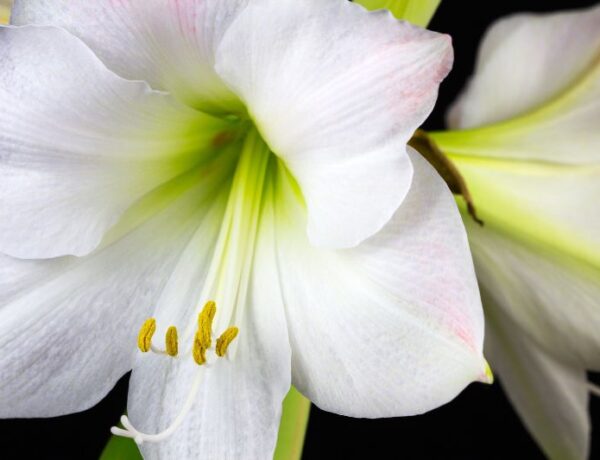
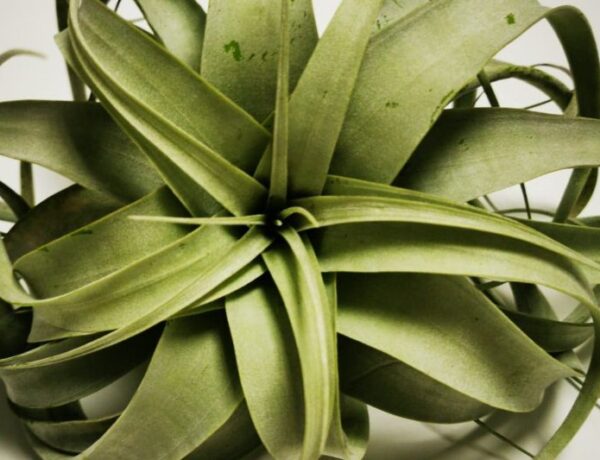


No Comments